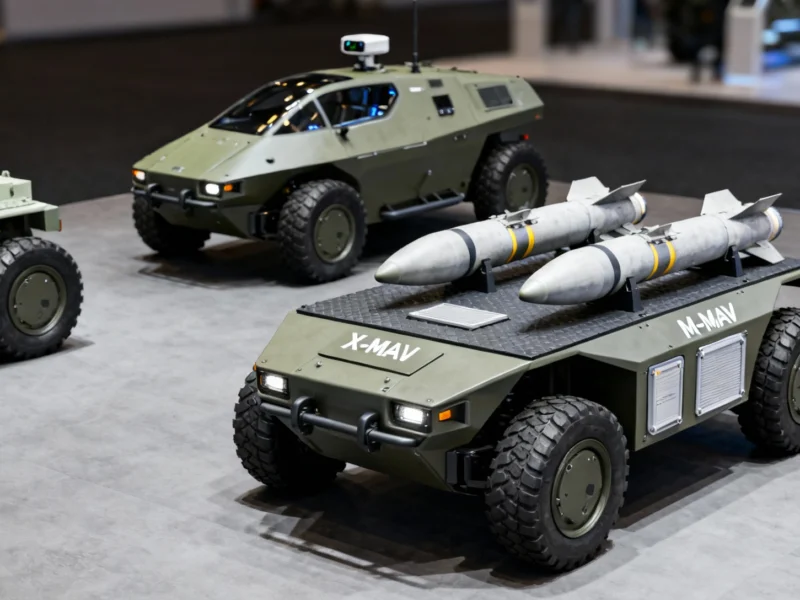According to Manufacturing.net, Lockheed Martin is making a $50 million strategic investment in Saildrone to weaponize autonomous sailboats. The collaboration aims to equip Saildrone’s unmanned surface vehicles with lethal defense technology, with on-water live fire demonstrations targeted for 2026. Larger Saildrone vehicles are being developed to carry significant payloads including the Lockheed Martin Mk70 vertical launch system. Saildrone CEO Richard Jenkins stated their technology is now “proven, de-risked and mission ready” after 10 years of development and over 2 million nautical miles of missions. The companies plan to quickly field new defense applications, with Saildrone handling shipbuilding and Lockheed Martin serving as mission integrator. Production will create jobs at Austal USA on the Gulf Coast.
The Autonomous Arms Race Accelerates
So we’re officially putting missiles on robot sailboats now. This isn’t some theoretical future concept – these things are already operational with the U.S. Navy since 2021. The timing here is what really stands out. They’re pushing for live-fire demonstrations in just two years, which suggests they’re not starting from scratch but rather weaponizing existing platforms.
Here’s the thing that gives me pause: we’re talking about autonomous systems making kill decisions. Sure, they mention “seamlessly integrated with Lockheed Martin’s trusted command and control systems,” but what happens when communications get jammed? Or when these things are operating for months at sea without direct human oversight?
Renewable Energy Meets Warfare
The renewable energy angle is fascinating though. Saildrone’s platforms run on wind and solar, which means they could potentially stay at sea for months without refueling. That’s a game-changer for persistent surveillance and presence missions. But it also raises questions about how reliable these systems will be when you add complex weapons systems that require significant power.
And let’s talk about that Mk70 vertical launch system they’re planning to integrate. That’s not some small defensive weapon – we’re talking about serious offensive capability. They’re basically creating low-cost, persistent missile platforms that could operate in contested waters where you wouldn’t risk a manned vessel.
The Commercial Speed Advantage
What’s really clever about this partnership is how they’re leveraging commercial development speed. Saildrone has been building these things for civilian applications like ocean mapping and weather data. Now they’re taking that proven platform and weaponizing it. It’s basically the Pentagon’s “move fast” strategy in action.
But here’s my concern: commercial reliability standards and military reliability standards are very different. A glitch that causes your ocean mapping drone to reset is annoying. A glitch that causes your armed autonomous vessel to malfunction could be catastrophic. They claim the technology is “de-risked,” but I’m skeptical about how thoroughly they’ve tested these edge cases.
The Bigger Picture
This investment signals where defense spending is heading. We’re seeing massive shifts toward autonomous systems at scale, and the appeal is obvious: cheaper platforms that don’t risk human lives. But we’re rushing into some pretty murky ethical and legal territory.
Basically, we’re creating the building blocks for fully autonomous warfare. The fact that this is happening through commercial partnerships rather than traditional defense contracting means it’s happening faster with less oversight. And that should make everyone at least a little nervous about where this all leads.
Continue Reading: Related Articles
Technology
Aerospace
Startups
Manufacturing
Government




